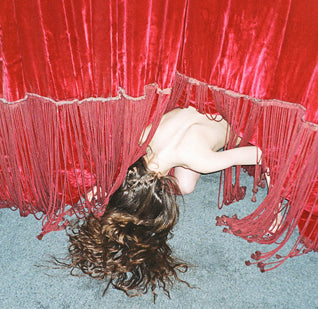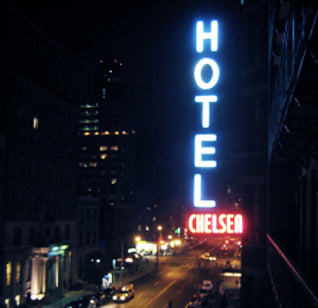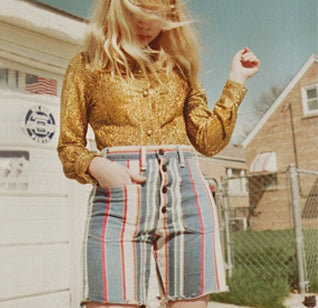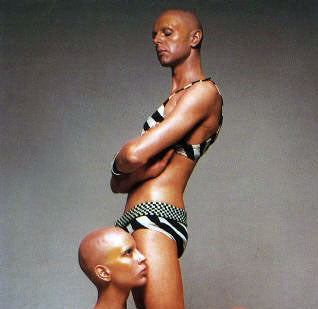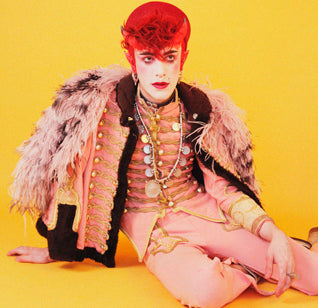IN CONVERSATION WITH ARTIST RAFAL ZAWISTOWSKI
On appropriation, religion, and the death of painting
by Ellie Howard
To truly experience a Rafal Zawistowski oil painting, you must stand in awe before it; then bow your head in peaceful surrender. The artist’s intricate paintings re-energise the act of seeing by depicting catholic icons from Jesus Christ to Benedict XV in an unconventional light. Day-Glo neon nightclub colours light up spray painted haloes, and thickly daubed paint coalesces into shadowy figures, their abstracted faces never fully recognisable. Zawistowski is interested in the realm between the material and the spiritual, and from the pasted granular crust of his paintings, a soft glow radiates as if the subjects spirit was entombed within the confines of the canvas.
While some may say that painting is dying a slow death, Rafal Zawistoski has revived the secrets of the old master techniques, breathing new life into the medium of painting. To find out more we caught up with the artist to discuss the dual nature of religion and the significance of colour:

Rafal Zawistowski’s depictions of popes at "New Order: British Art Today" at Saatchi Gallery
KOD: If you had to use one word to describe your art to someone, what would you say?
RZ: Balanced
KOD: How important do you think the human touch is to painting? How important do you think it is to interact with art?
RZ: I like making paintings that people want to touch, but societal conventions dictate what they can and cannot do, specifically within an exhibition setting. I want to leave traces of the artist touch within the work, as it shows the intimacy and immediacy that goes into creating it.

Rafal Zawistowski: Peter, 2013 (Detail)
KOD: Do you think painting is dying at the hands of young artists? Younger artists seem to want to spend their time focusing on conceptual art?
RZ: I feel painting isn't dying, but it is definitely harder to make something new. The process has become about refining and redefining. I think young artists coming out of art school almost try to be too intelligent, and when the concept behind their work is missed by the viewer, there is nothing more to understand and the viewer moves on. It’s almost like “Art for Art’s sake”.

Rafal Zawistowski: Clara, 2013 (Detail)
KOD: You use a particular day-glo colour palette within your painting, are you re-appropriating religious iconographies in a modern context through use of colour?
RZ: I just love colour. In my teenage years I used to do a lot of graffiti and that vibrancy of colour has really stayed with me. I create paintings that are both grotesque yet beautiful. I degrade my figures and landscapes by striping them of their historical context but I paint auras in day-glo colours to give them a renewed significance. I liken the viewers experience to walking on a tight rope, they balance precariously, either enamoured by the painting or hating it.
KOD: Do you think that religion or spirituality is more important in today’s society?
RZ: For me spirituality is more important, I am not saying religion isn't but spirituality cannot be forced, I feel it is something that you personally discover.

Rafal Zawistowski: Eden #1, 2011 (Detail)
KOD: How strongly do you think your catholic upbringing has influenced your work? Not just in subject, but also in the aura your painting emanates?
RZ: Being exposed to Catholicism has allowed me to view the world from a sublime yet ugly perspective. What I mean by this is that everything has an inherent duality; it is like painting something in a tragic, but pleasant way.
KOD: Oil and wax must take a long time to set, when and why did you begin to use these mediums?
RZ: I started researching wax and its uses in painting as early as 2003, and since then have been fascinated by its ability to become an additive to paint. I create a paste, which I then add to the oil colours. The paintings take about a month to dry to the touch.

Rafal Zawistowski: Francis I, 2013 (Detail)
KOD: And finally, what does DADA mean to you?
RZ: Play and experimentation, of course.












